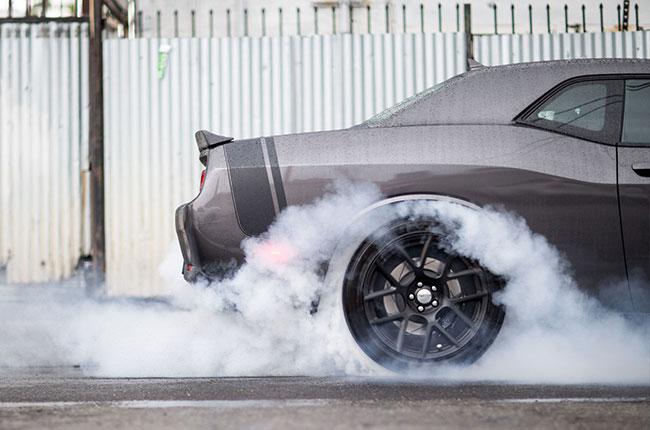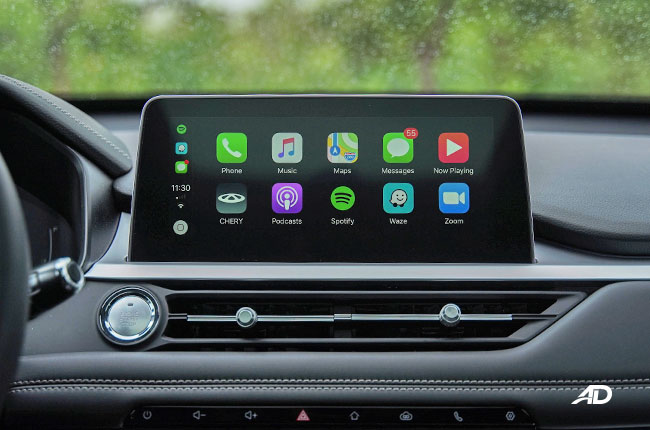
Understanding the basic automotive specs can help you decide on what kind or type of car fits your preference. With that, we’ve compiled 8 of the most commonly used spec sheet terminologies that can guide you in choosing your new car.
Engine displacement

Engine displacement means the combined volume of the cylinders in the engine (measured in cubic centimeters or cc). To put things in perspective, imagine a water container with a volume of 499.5cc which represents a 1 engine cylinder. Now, add 3 more containers of the same volume. You’ll then have a combined volume of 1,988cc.
That equates to a 4-cylinder engine with a displacement of 1,998cc, which in most spec sheets is rounded off as 2.0L. The best example of this is the Mazda 3 which has a 1,998cc (or 2.0-liter) engine.
Horsepower / Torque

Horsepower is the amount of power generated by the engine as it turns air and fuel into energy, torque, on the other hand, is the amount of force the engine is capable of exerting in order to pull the vehicle forward. Local car manufacturers often use ‘hp’ and ‘Nm’ to represent the vehicle’s horsepower and torque rating, where 'hp' stands for horsepower, and 'Nm' stands for Newton-meters.
Transmission

The transmission is a component that distributes engine power and torque to the drive wheels so the car can move. Nowadays, there are 4 major types of transmissions: manual, automatic—or torque converter, automated manual, dual-clutch transmission (DCT), and continuously variable transmission (CVT). Manual gives drivers full control of changing gears, while the automatic provides a more relaxed and convenient driving experience by doing away with the hands-on operation of the clutch and gear shifting.
Automated manual transmissions feature the near-exact same layout as a traditional manual transmission, however, a computer is in place along with an electronic control mechanism to engage and disengage the clutch and manage the gear shifting of the vehicle.
A DCT will act as a manual transmission, however, two clutches and a mechanical or electronic actuation allow for this type of transmission to row through gears and disengage the clutch.
The CVT, on the other hand, is just like an automatic but it offers a smoother driving feel as it no longer has to change gears in order to increase or decrease speed. Think of it as having a single gear that can adjust itself to low, medium, or high speeds. The Ford Territory is a good example of a car that has this kind of transmission.
Drivetrain

This refers to the drive wheels or the wheels that are driven by the engine and transmission. The most common drivetrains are; front-wheel-drive (FWD), rear-wheel-drive (RWD), all-wheel drive (AWD), and 4-wheel-drive (4WD).
Small cars like the Kia Picanto use the FWD layout to align with its subcompact dimensions, while high-performance cars or those with bigger bodies like the Toyota 86 and the Toyota Innova use RWD for better handling, stability on heavy loads, or other reasons depending on the segment. Vehicles like the Mitsubishi Montero Sport can be had in 4WD while crossover like the Honda CR-V and Subaru Forester is available with AWD. Both drivetrains allowing it to do well on uneven or varying road surfaces because power and torque are transmitted to all 4 wheels, improving grip in the process.
Dimension

An automobile’s dimensions consist of its body’s length, width, and height. It also includes the wheelbase (the length of the lower body between the front and rear wheels), ground clearance (the height or measurement of the gap between the vehicle’s underbody and the road surface), trunk capacity, and maximum cargo (the volume by which the vehicle can carry stuff in the cabin when its rear seats are folded down).
ABS / EBD

ABS stands for Anti-lock Braking System. It’s a device that prevents the wheels from completely locking, thus preventing the tires from skidding. It allows the driver to steer the car more effectively while braking to evade a collision. EBD, on the other hand, means Electronic Brake-force Distribution. It automatically adjusts and evens out the braking power to the front and the back wheels, depending on the situation and load carried by the vehicle (i.e. passengers and luggage).
Cruise Control

The basic function of cruise control is to allow the driver to program the vehicle to maintain a certain speed without stepping on the accelerator pedal. Some cars step it up a notch with an Adaptive Cruise Control. This uses a system of radars and/or cameras to monitor the traffic ahead and safely adjust the vehicle’s speed accordingly
Infotainment system

An infotainment system consists of either a touch screen LCD and a significantly reduced number of physical control buttons or a traditional knob and button layout for more basic models. Its function ranges from playing music to movies, displaying vehicle information to a live feed from the reversing camera, and even displaying electronic road maps with GPS navigation. Some systems even have connectivity features that allow users to go online or make hands-free phone calls, along with Apple CarPlay and Android Auto.
It pays to know at least the basic terminologies car manufacturers use to describe their products. Not only will you be able to gain additional knowledge, but you’ll also save yourself from the burden of getting confused as to which car fits you best or satisfies your liking. We hope that this simple guide will help you.
Latest Features
-
The difference between wax and polish / Tips & Advice
Confused about whether your car needs a wax or polish? This article will guide you on what they are and what to choose for your car.
-
The 6 things every Ford Ranger must pass before it leaves the factory / Featured Article
Every Ford Ranger, from the base model to the Ranger Raptor, goes through a full inspection process before it leaves the factory. This includes six steps that make sure it’s ready to drive a...
-
Which GAC AION EV is best for your everyday lifestyle? / Featured Article
The GAC AION lineup has something for everyone, maybe you're after space, speed, or just a smooth city drive. Here's a quick breakdown of which model might work best for your day-to-day life...
Popular Articles
-
Cheapest cars under P700,000 in the Philippines
Jerome Tresvalles · Sep 02, 2024
-
First car or next car, the Ford EcoSport is a tough package to beat
Jun 18, 2021
-
Car Maintenance checklist and guide – here’s everything you need to know
Earl Lee · Jan 12, 2021
-
Most fuel efficient family cars in the Philippines
Bryan Aaron Rivera · Nov 27, 2020
-
2021 Geely Okavango — Everything you need to know
Joey Deriquito · Nov 19, 2020
-
Family cars in the Philippines with the biggest trunks
Sep 20, 2023
-
Head to head: Toyota Rush vs. Suzuki XL7
Joey Deriquito · Oct 28, 2020
-
Why oil changes are important for your car
Earl Lee · Nov 10, 2020
-
2021 Kia Stonic — What you need to know about it
Joey Deriquito · Oct 16, 2020
-
Top 7 tips for buying a used car in the Philippines
Joey Deriquito · Nov 26, 2020



